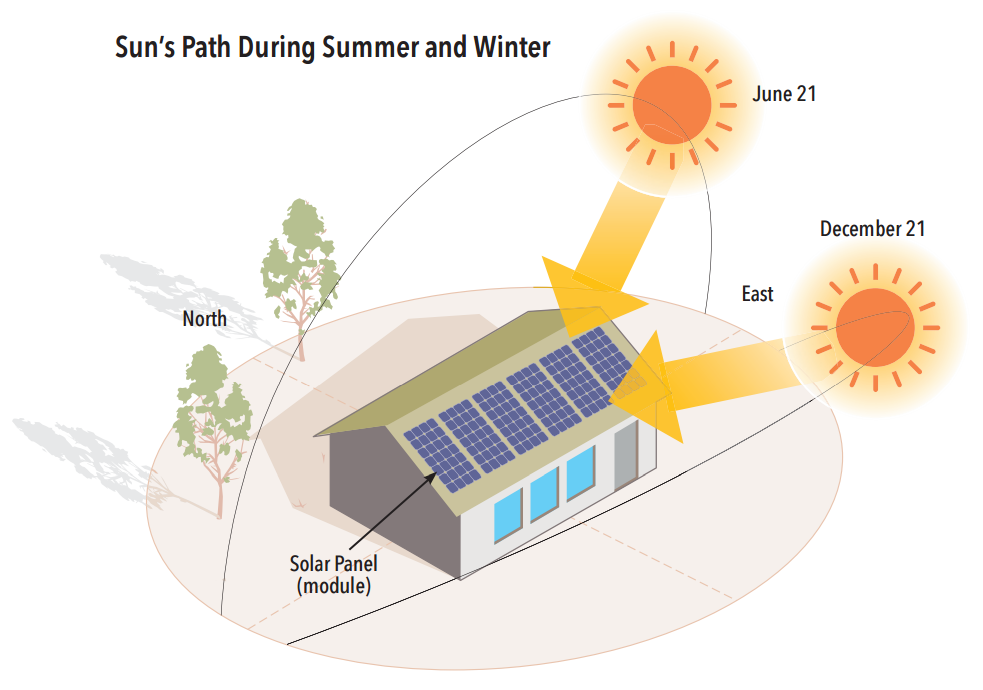A solar electric system typically consists of solar panels and an inverter. Some may also include a battery and charge controller. Common types of solar electric systems include grid-connected, grid-connected with battery backup, off-grid, and community solar. Each has distinct applications and components.
There are many factors to consider when choosing the right solar electric system.
Energy Efficiency
Before installing solar, ensure the home or business is energy efficient. Energy efficiency is a cost-effective, low-risk investment that can improve the health, safety, and comfort of a home or business. Additionally, an energy-efficient building will require fewer solar panels. More information on energy efficiency can be found on EnergySaver.SC.GOV.
Physical Limitations
The type and size of a solar electric system that can be physically installed will depend on the type of roof and how much sun the building gets. The home’s roof type and solar resource will determine the solar electric system type and size.
Personal Priorities
When purchasing a solar electric system, the right choice will depend on how much sunlight the area receives, the budget, how much conventional power a consumer wants to offset with solar power, how much room there is on a roof or in a yard, and where the solar panels will be mounted.
Roof Requirements
Before purchasing a solar electric system, homeowners need to determine available roof space and condition. A helpful tool to use when deciding whether to purchase solar for a home or business is Google’s Project Sunroof. With this tool, consumers can type in an address and see an estimate of how much of their roof is available for a solar installation.
Roof Condition
If a roof is more than 15 years old, consumers may want to consider replacing it when they purchase a solar electric system; otherwise, the entire solar electric system will need to be removed whenever the roof is replaced. Most solar vendors recommend using roofing material that will last as long as the system, which is about 25 to 30 years. Make sure the roof can hold the weight of the system, which is estimated at three to five pounds per square foot, depending on the type of technology used and installation methods. In addition, be certain to ask the installer about the structural integrity of an existing roof and its ability to safely support solar panels.
Space and Orientation
For maximum performance, a solar electric system needs about 75 to 100 square feet of unshaded south-facing roof or yard space for every kilowatt of electricity produced. If a roof does not face south, consumers can still use a solar electric system, but the performance will be about 5% less with a southeast- or southwest-facing system. Eastern, western, and northern exposures will show an even greater drop in performance, so consumers should be sure to understand how such a system will meet expectations.
Roof pitch is also important to capture the path of the sun, but the requirements vary with location. The solar vendor and installer should be able to tell how the pitch of a roof will affect the performance of a system. When a south-facing roof is not available, some people install solar electric systems on garage roofs or use them as window awnings and porch coverings. If a consumer has a shortage of roof space, panels can be mounted on a pole or in the yard. Ground-mounted systems are great for homes with large yards. Some systems come mounted on a tracker that follows the sun’s movement.
 Shading
Shading
Shading a panel reduces its performance because it blocks sunlight. The most common items that shade solar panels are trees, chimneys, nearby buildings, pipes, skylights, and vents. To determine possible shading problems, consult a solar professional who uses a software program that can estimate site shading. Some people will examine a proposed location throughout the day and year to see how the area shading changes. For example, shading in an area can change from summer to winter because the sun’s path changes.